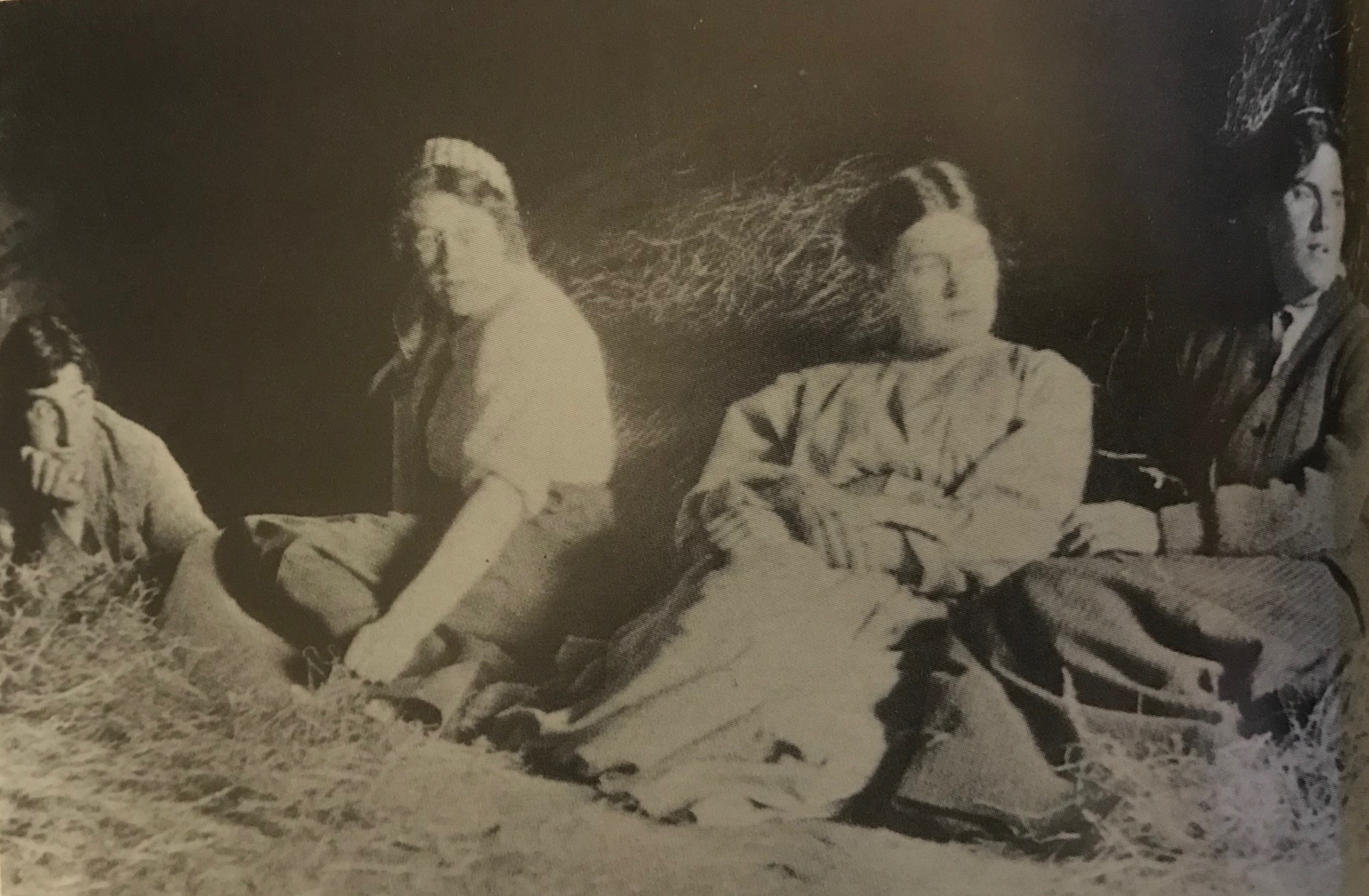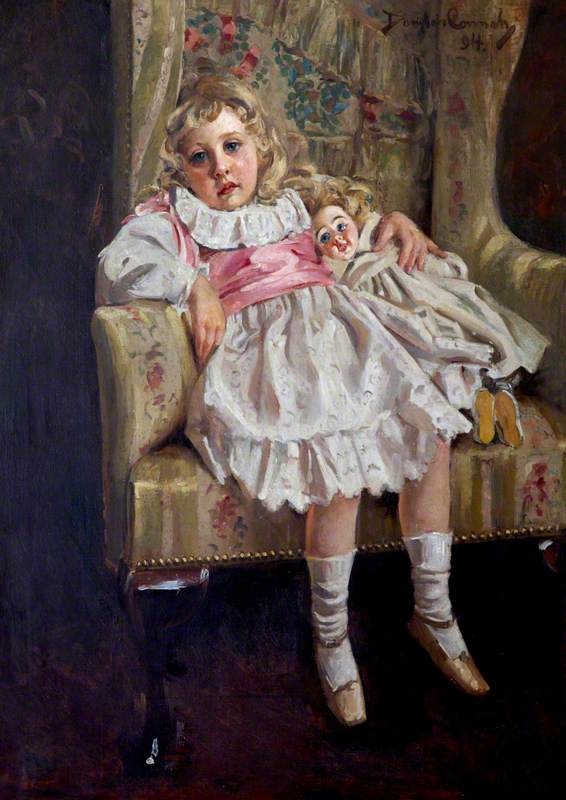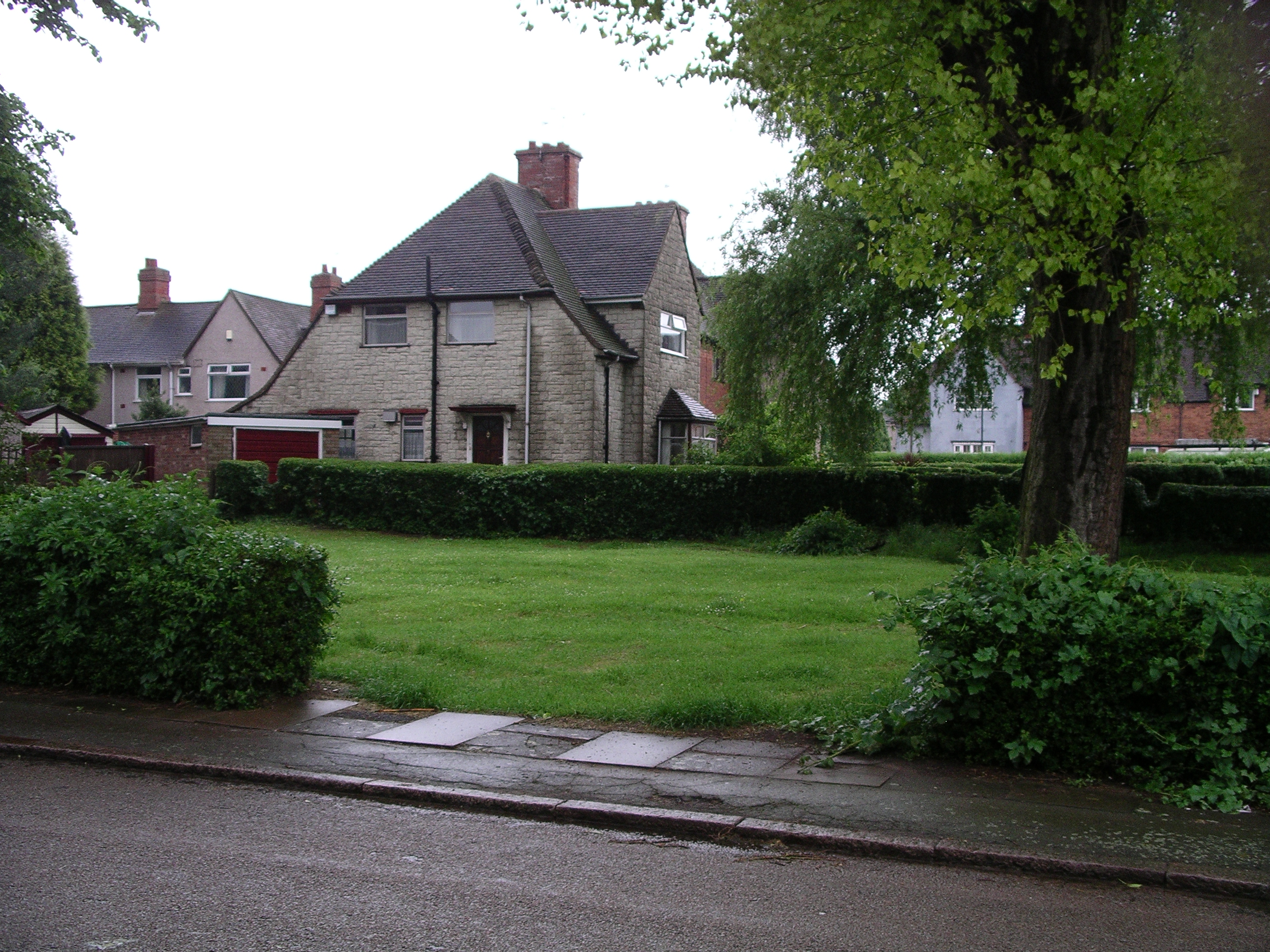|
Frances Cornford
Frances Crofts Cornford (née Darwin; 30 March 1886 – 19 August 1960) was an English poet. Life She was the daughter of the botanist Francis Darwin and Newnham College fellow Ellen Wordsworth Crofts (1856-1903), and born into the Darwin—Wedgwood family. She was a granddaughter of the British naturalist Charles Darwin. Her older half-brother was the golf writer Bernard Darwin. She was brought up in Cambridge, among a dense social network of aunts, uncles, and cousins, and was educated privately. Because of the similarity of her first name, her father's and her husband's, she was known to her family before her marriage as "FCD" and after her marriage as "FCC" and her husband Francis Cornford was known as "FMC". Her father Sir Francis Darwin, a son of Charles Darwin, yet another 'Francis', was known to their family as "Frank", or as "Uncle Frank". In 1909, Frances Darwin married Francis Cornford, a classicist and poet. They had five children: * Helena Cornford ( ... [...More Info...] [...Related Items...] OR: [Wikipedia] [Google] [Baidu] |
Francis Cornford
Francis Macdonald Cornford (27 February 1874 – 3 January 1943) was an English classical scholar and translator known for work on ancient philosophy, notably Plato, Parmenides, Thucydides, and ancient Greek religion. Frances Cornford, his wife, was a noted poet. Due to the similarity in their names, he was known in the family as "FMC" and his wife as "FCC". Early life and family Cornford was born in Eastbourne, Sussex, on 27 February 1874. He attended St Paul's School, London. In 1909 Cornford married the poet Frances Darwin, daughter of Sir Francis Darwin and Ellen Wordsworth Darwin, née Crofts, and a granddaughter of Charles Darwin. They had five children: *Helena (1913–1994), who married Joseph L. Henderson in 1934 *John (1915–1936), poet and Communist killed in the Spanish Civil War * Christopher (1917–1993), artist and writer, the father of Adam Cornford *Hugh Wordsworth (1921–1997), medical doctor *Ruth Clare (1923–1992), mother of Matthew Chapman Ac ... [...More Info...] [...Related Items...] OR: [Wikipedia] [Google] [Baidu] |
The Times
''The Times'' is a British daily national newspaper based in London. It began in 1785 under the title ''The Daily Universal Register'', adopting its current name on 1 January 1788. ''The Times'' and its sister paper '' The Sunday Times'' (founded in 1821) are published by Times Newspapers, since 1981 a subsidiary of News UK, in turn wholly owned by News Corp. ''The Times'' and ''The Sunday Times'', which do not share editorial staff, were founded independently and have only had common ownership since 1966. In general, the political position of ''The Times'' is considered to be centre-right. ''The Times'' is the first newspaper to have borne that name, lending it to numerous other papers around the world, such as '' The Times of India'', ''The New York Times'', and more recently, digital-first publications such as TheTimesBlog.com (Since 2017). In countries where these other titles are popular, the newspaper is often referred to as , or as , although the newspaper is of nati ... [...More Info...] [...Related Items...] OR: [Wikipedia] [Google] [Baidu] |
1960 Deaths
Year 196 ( CXCVI) was a leap year starting on Thursday (link will display the full calendar) of the Julian calendar. At the time, it was known as the Year of the Consulship of Dexter and Messalla (or, less frequently, year 949 '' Ab urbe condita''). The denomination 196 for this year has been used since the early medieval period, when the Anno Domini calendar era became the prevalent method in Europe for naming years. Events By place Roman Empire * Emperor Septimius Severus attempts to assassinate Clodius Albinus but fails, causing Albinus to retaliate militarily. * Emperor Septimius Severus captures and sacks Byzantium; the city is rebuilt and regains its previous prosperity. * In order to assure the support of the Roman legion in Germany on his march to Rome, Clodius Albinus is declared Augustus by his army while crossing Gaul. * Hadrian's wall in Britain is partially destroyed. China * First year of the '' Jian'an era of the Chinese Han Dynasty. * Emperor Xia ... [...More Info...] [...Related Items...] OR: [Wikipedia] [Google] [Baidu] |
1886 Births
Events January–March * January 1 – Upper Burma is formally annexed to British Burma, following its conquest in the Third Anglo-Burmese War of November 1885. * January 5– 9 – Robert Louis Stevenson's novella '' Strange Case of Dr Jekyll and Mr Hyde'' is published in New York and London. * January 16 – A resolution is passed in the German Parliament to condemn the Prussian deportations, the politically motivated mass expulsion of ethnic Poles and Jews from Prussia, initiated by Otto von Bismarck. * January 18 – Modern field hockey is born with the formation of The Hockey Association in England. * January 29 – Karl Benz patents the first successful gasoline-driven automobile, the Benz Patent-Motorwagen (built in 1885). * February 6– 9 – Seattle riot of 1886: Anti-Chinese sentiments result in riots in Seattle, Washington. * February 8 – The West End Riots following a popular meeting in Trafalgar Square, London. * ... [...More Info...] [...Related Items...] OR: [Wikipedia] [Google] [Baidu] |
Conduit Head
Conduit Head is a 1910 house located off the Madingley Road ( A1303) on the western outskirts of Cambridge, England. Built in 1910, it was designed by Harry Redfern for Francis Darwin, and was built for Darwin's daughter Frances on the occasion of her marriage to F. M. Cornford. The architectural historians Simon Bradley and Nikolaus Pevsner describe the house as "gabled, rural and relaxed". History The house was built in 1910 as a wedding gift from Francis Darwin (third son of Charles Darwin and Emma) to his daughter, Frances Crofts Darwin, for her marriage to Francis Cornford.Simon Bradley, Nikolaus Pevsner. ''Cambridgeshire'' (''The Buildings of England'' series), p. 343 (Yale University Press; 2014) It was designed by Harry Redfern and its name was carved by Eric Gill. Conduit Head was owned by Sir Peter Lachmann (1931–2020), Sheila Joan Smith Professor of Immunology at the University of Cambridge and a fellow of Christ's College, and his wife Sylvia. Name A ... [...More Info...] [...Related Items...] OR: [Wikipedia] [Google] [Baidu] |
Agatha Christie
Dame Agatha Mary Clarissa Christie, Lady Mallowan, (; 15 September 1890 – 12 January 1976) was an English writer known for her 66 detective novels and 14 short story collections, particularly those revolving around fictional detectives Hercule Poirot and Miss Marple. She also wrote the world's longest-running play, the murder mystery '' The Mousetrap'', which has been performed in the West End since 1952. A writer during the "Golden Age of Detective Fiction", Christie has been called the "Queen of Crime". She also wrote six novels under the pseudonym Mary Westmacott. In 1971, she was made a Dame (DBE) by Queen Elizabeth II for her contributions to literature. ''Guinness World Records'' lists Christie as the best-selling fiction writer of all time, her novels having sold more than two billion copies. Christie was born into a wealthy upper middle class family in Torquay, Devon, and was largely home-schooled. She was initially an unsuccessful writer with si ... [...More Info...] [...Related Items...] OR: [Wikipedia] [Google] [Baidu] |
Triolet
A triolet (, ) is almost always a stanza poem of eight lines, though stanzas with as few as seven lines and as many as nine or more have appeared in its history. Its rhyme scheme is ABaAabAB (capital letters represent lines repeated verbatim) and often in 19th century English triolets all lines are in iambic tetrameter, though in traditional French triolets, from the 17th century on, the second, sixth and eighth lines tend to be iambic trimeters followed by one amphibrachic foot each. In French terminology, a line ending in an iambic foot was denoted as masculine, while a line ending in an amphibrachic foot was called feminine. Depending on the language and era, other meters are seen, even in French. The first, fourth and seventh lines are identical, as are the second and final lines, thereby making the initial and final couplets identical as well. In a traditional French triolet, the second and third non-repeating lines rhyme with the repeating first, fourth, and seventh lines, wh ... [...More Info...] [...Related Items...] OR: [Wikipedia] [Google] [Baidu] |
All Souls' Day
All Souls' Day, also called ''The Commemoration of All the Faithful Departed'', is a day of prayer and remembrance for the faithful departed, observed by certain Christian denominations on 2 November. Through prayer, intercessions, alms and visits to cemeteries, people commemorate the poor souls in purgatory and gain them indulgences. In Western Christianity, including the Roman Catholicism and certain parts of Lutheranism and Anglicanism, All Souls' Day is the third day of Allhallowtide, after All Saints' Day (1 November) and All Hallows' Eve (October 31). Before the standardization of Western Christian observance on 2 November by St. Odilo of Cluny in the 10th century, many Catholic congregations celebrated All Souls Day on various dates during the Easter season as it is still observed in some Eastern Orthodox Church, Eastern Catholic and Eastern Lutheran churches. Churches of the East Syriac Rite (Syro-Malabar Catholic Church, Chaldean Catholic Church, Assyrian Church of ... [...More Info...] [...Related Items...] OR: [Wikipedia] [Google] [Baidu] |
Philip Larkin
Philip Arthur Larkin (9 August 1922 – 2 December 1985) was an English poet, novelist, and librarian. His first book of poetry, ''The North Ship'', was published in 1945, followed by two novels, ''Jill'' (1946) and ''A Girl in Winter'' (1947), and he came to prominence in 1955 with the publication of his second collection of poems, '' The Less Deceived'', followed by ''The Whitsun Weddings'' (1964) and '' High Windows'' (1974). He contributed to ''The Daily Telegraph'' as its jazz critic from 1961 to 1971, with his articles gathered in ''All What Jazz: A Record Diary 1961–71'' (1985), and edited '' The Oxford Book of Twentieth Century English Verse'' (1973). His many honours include the Queen's Gold Medal for Poetry. He was offered, but declined, the position of Poet Laureate in 1984, following the death of Sir John Betjeman. After graduating from Oxford University in 1943 with a first in English Language and Literature, Larkin became a librarian. It was during the thirt ... [...More Info...] [...Related Items...] OR: [Wikipedia] [Google] [Baidu] |
Cambridgeshire
Cambridgeshire (abbreviated Cambs.) is a county in the East of England, bordering Lincolnshire to the north, Norfolk to the north-east, Suffolk to the east, Essex and Hertfordshire to the south, and Bedfordshire and Northamptonshire to the west. The city of Cambridge is the county town. Following the Local Government Act 1972 restructuring, modern Cambridgeshire was formed in 1974 through the amalgamation of two administrative counties: Cambridgeshire and Isle of Ely, comprising the historic county of Cambridgeshire (including the Isle of Ely); and Huntingdon and Peterborough, comprising the historic county of Huntingdonshire and the Soke of Peterborough, historically part of Northamptonshire. Cambridgeshire contains most of the region known as Silicon Fen. The county is now divided between Cambridgeshire County Council and Peterborough City Council, which since 1998 has formed a separate unitary authority. In the non-metropolitan county there are five district counc ... [...More Info...] [...Related Items...] OR: [Wikipedia] [Google] [Baidu] |
Girton, Cambridgeshire
Girton is a village and civil parish of about 1,600 households, and 4,500 people, in Cambridgeshire, England. It lies about to the northwest of Cambridge, and is the home of Girton College, a constituent college of the University of Cambridge. Listed as ''Grittune'' in around 1060 and ''Grittune'' in the Domesday Book, the village's name is derived from the Old English ''grēot + tūn'' meaning "farmstead or village on gravelly ground", as the settlement was formed on a gravel ridge. History Girton has a long history, and has been home to a poor settlement for more than 2000 years. The parish lies on the Via Devana, the Roman road, and a cemetery with at least 225 burials between the 2nd century AD and the early Anglo Saxon period was found near Girton College in 1880. In addition, traces of agriculture from the late Bronze Age and Roman period were found to the north of the village in 1975. A selection of Anglo-Saxon items are stored in the collection of Girton College. Before ... [...More Info...] [...Related Items...] OR: [Wikipedia] [Google] [Baidu] |




.jpg)

